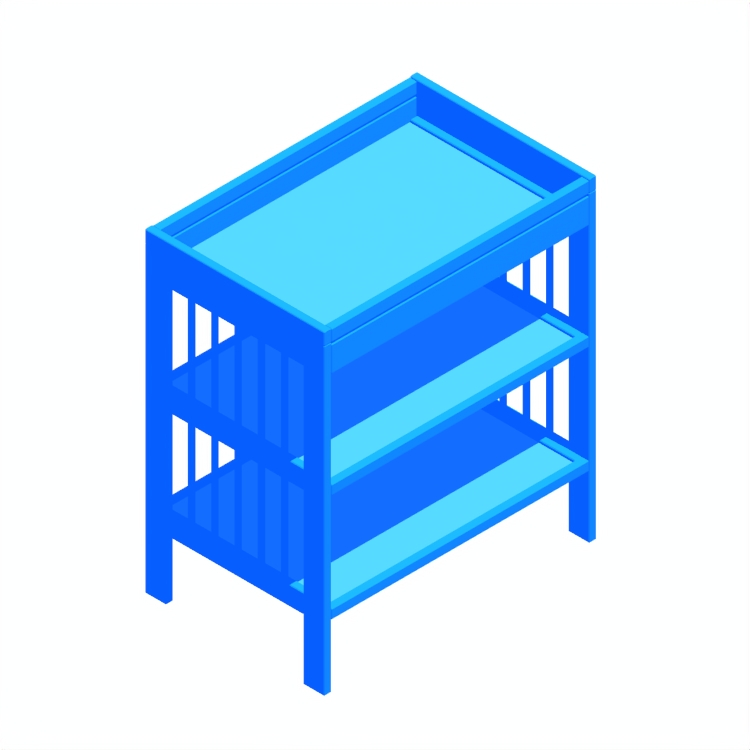Changing tables are specialized pieces of furniture designed for safely and comfortably changing a baby's diapers. Typically positioned at a comfortable height for the caregiver, these tables prevent the need to bend over, making diaper changes easier on the adult's back. They come in various styles, including standalone tables, convertible cribs with attached changing stations, and portable options that can be placed on top of existing furniture.
Many changing tables include features like safety straps, raised sides for added security, and storage spaces for diapers, wipes, and other baby essentials. They are commonly used in nurseries, childcare centers, and increasingly in public restrooms, providing a designated, hygienic space for diaper changes. Their primary purpose is to offer a safe, convenient spot for changing diapers while keeping necessary supplies within easy reach.
Changing tables, as a specific piece of furniture, emerged alongside the modern concept of a dedicated nursery room. Initially, caregivers often used whatever flat surface was available, like beds or tables, for diaper changes. As child care practices evolved, the need for a more secure and convenient solution became evident. This led to the development of the changing table, a stable surface with raised edges for safety.
Over time, these tables evolved to include additional features like storage for diapers and wipes, comfortable padding, and safety straps. Their design has been continually refined to prioritize the safety and comfort of both the baby and the caregiver, becoming a standard fixture in nurseries and childcare settings.
The future of changing tables is likely to focus on enhanced safety, multifunctionality, and integration with technology. We might see designs that incorporate advanced materials for greater durability and hygiene, such as antibacterial surfaces. Technological features could include built-in scales to monitor a baby’s weight or sensors to ensure optimal safety during use. Contemporary trends already show changing tables that convert into dressers or desks, offering long-term use beyond the baby years.
The integration of storage solutions is becoming more sophisticated, with better organization options for baby essentials. These innovations aim to make changing tables not just a temporary nursery fixture, but a versatile, safe, and intelligent piece of furniture in the modern family home.
When choosing a changing table, prioritize safety features. Look for a table with sturdy construction to prevent tipping. A guardrail or raised edges around all sides is essential to keep the baby secure. Ensure the table has a safety strap to gently hold the baby in place. Check for certification from safety standards organizations, and avoid sharp edges or small parts that could pose hazards.
Many changing tables are designed with future adaptability in mind, allowing them to be converted as the child grows. These tables often transform into regular dressers or storage units by removing the changing pad and rails. Some models convert into desks or bookshelves, providing long-term utility beyond the baby years. This multifunctional design ensures the furniture remains useful, offering practicality and value over time.
To maintain and clean a changing table, start by regularly wiping it down with a mild, baby-safe disinfectant or soap and water to remove dirt and germs. For tougher stains, use a slightly abrasive sponge. Avoid harsh chemicals that could harm the baby or damage the table's surface. Regularly launder any fabric components like changing pads. Also, promptly clean up any spills to prevent moisture damage.





